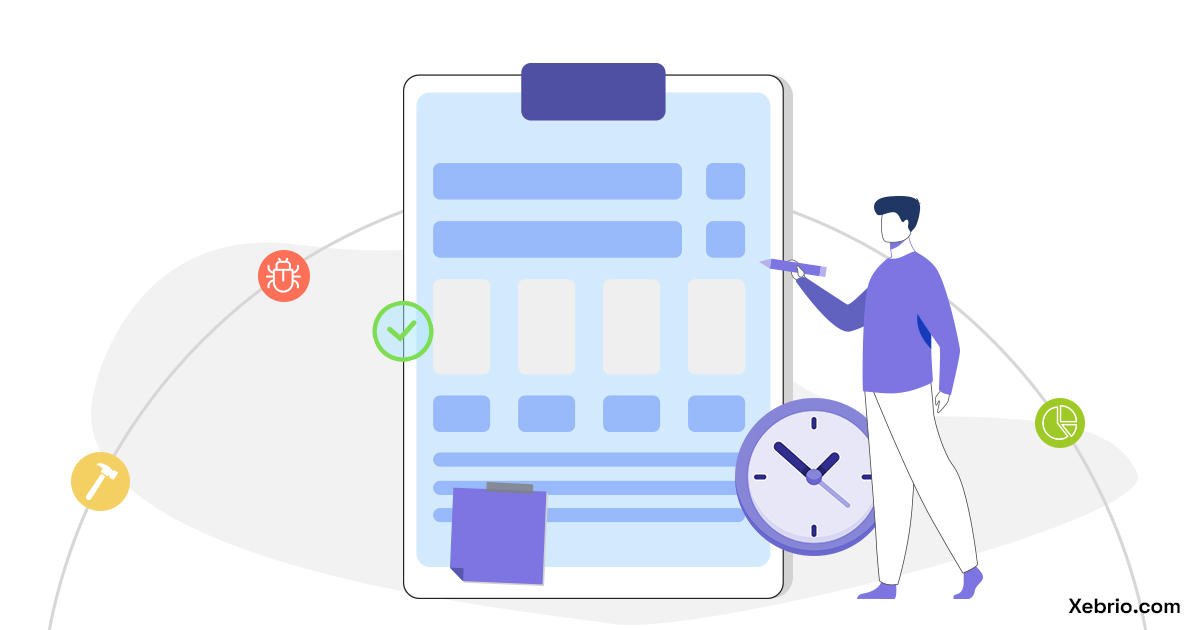As the name suggests, a requirements document keeps track of all requirements. It is a checklist of all tasks that should be completed or conditions that should be met to indicate successful completion. These could be business requirements, project requirements, product requirements, software requirements, functional requirements, technical requirements, market requirements, and so on.
These documents act as a reference point for determining the purpose, feature, value proposition, or specifications of the entity that you are working on. Think of it as the vision board for the task at hand.
Here, we will take a look at how you can write dependable requirements documents regardless of the application or the industry.
Why should you maintain requirements documents?
A famous saying goes – if you’re failing to plan, you’re planning to fail. Requirements documents are an instrumental part of planning that involves comprehensive research, strategy-building, goal-setting, and roadmap creation. It ensures that the end results match the outcomes.
Here are a few reasons why you should maintain requirements documents:
- It keeps heterogeneous teams focused on the primary objective by bringing everyone on the same page.
- It helps define and communicate customer needs or problems that are being addressed.
- It acts as the basis for estimating timelines, budgets, resources, etc. It also sets realistic expectations for stakeholders.
- It reduces the possibility of failure by outlining the requirements and the associated considerations.
- It lends direction to the disparate teams on how they should proceed after hand-offs.
- It minimizes the possibility of scope creep and eliminates the need for any rework.
- By reducing scope creep and the need for rework, requirements documentation also reduces cost overheads.
7 types of requirements documents
Requirements documents can be broadly classified into the following types:
Business requirements document (BRD)
A business requirements document or a BRD marks the first stage of a product lifecycle. It details high-level business requirements and couples them with customer needs to resolve any problems. It is typically a single-page document with a bulleted list of requirements.
Apart from focusing on the current requirements, BRD also explores the possibility of future improvements. Such long-term goals can be added to the pipeline if time, budget, and resources permit or shelved for later reference.
Functional requirements document (FRD)
A functional requirements document or FRD logically documents how a system, project, or product can accomplish the requirements outlined in the BRD. It analyzes the functionality of the system by capturing its intended behavior and breaks it down into services, tasks, or functions that project developers will agree to extend or work on.
Rather than focusing on the internal functioning or working of the system, FRD goes into detail about how it is supposed to render at the front end. As such, the FRD may contain assets like wireframes, screen mockups, mock prototypes, etc., and can range from tens to hundreds of pages.
Product requirements document (PRD)
A product requirements document (PRD) goes into all the details of the product features, designs, and specifications that must be included in a single release to count it as done. It is primarily written from the end user’s perspective so that the product performs as intended.
At the same time, it also keeps note of the assumptions, dependencies, and constraints that may pose limitations to the project development. One can even say that a PRD is an extension of the FRD with non-functional requirements sprinkled in.
Technical requirements document (TRD)
The technical requirements document or TRD requirements make an appearance for projects involving software, hardware, or platform development. As the name indicates, they are written by the engineering team to weigh in on the technical requirements of the product, such as the programming language to be used, the processor speed required, the overall tech stack, etc. It may also consider the limitations of the existing systems and performance and propose future upgrades.
Software requirements specification (SRS)
SRS documentation details the features and intended behavior of a software product or system. The SRS document describes the business’ understanding of the end user’s expectations and lays out the functional and non-functional requirements to meet these expectations. While the SRS document echoes what is captured by the FRD and PRD, it does so with the specific IT project in mind.
Quality requirements document (QRD)
The quality requirements document (QRD) outlines the quality benchmarks that the finished product must meet to be considered complete. The QRD may be read with the Test Requirements Document (TRD) that establishes the testing parameters to vet the functioning of the product.
Interestingly, the customer may have a different set of QRD and TRD to evaluate the product and satisfy themselves regarding the reliability, usability, consistency, and maintainability of the product delivered.
Stakeholders involved in creating a requirements document
From the above, it is clear that the stakeholders involved in creating the requirements document might vary depending on the type of requirements document. However, the following stakeholders would broadly feature in most requirement documents:
- The Customer or the Product Owner: The customer or the product owner is the ultimate authority in determining what they need. In fact, the project originates since they identify a pressing need that should be acted upon.
- Executives: Although executives may not be involved in all kinds of projects, they might be needed to approve a high-budget project before it is accepted. They might review it at the top level and work out the feasibility and profitability of undertaking the project.
- Problem Analyst: Depending on their subject matter expertise – be it business-related, marketing, technical, etc. – problem analysts are responsible for discovering the problem or requirement and pitching practical and reasonable solutions for them.
- Project Manager: The project manager is responsible for putting the advice of the problem analyst into action and delivering the solution to the problem while meeting practically realizable requirements.
- Team Members: These are the individuals working on the project at the grassroots level. They are the ones who understand how to align their skills and roles to satisfy the requirement and make it happen.
Do’s and Don’ts of compiling requirements document
Here are a few golden rules for writing stellar requirements documents:
- Leverage requirements elicitation methods like brainstorming, analysis, surveys, prototypes, observations, etc., to understand (and document) core requirements in detail.
- Understand the role of every stakeholder so that you can value their contribution. You can even tailor your requirements elicitation method depending on the groups that you are interacting with to capture requirements more effectively.
- While requirements gathering and documentation take place in the earliest possible stages of the project lifecycle, be open and flexible to identify and document any new requirement that may crop up during development.
- Avoid any jargon or technical terms in your requirements document. Try to capture all the requirements in layman’s terms to prevent any confusion or misinterpretation. The language should be simple, unambiguous, and clear so that everyone comprehends its meaning and intention.
- If it is inevitable for the requirements document to contain jargon or technical terms, include a glossary of terms to explain their respective meanings.
- Use previous requirements documents of similar or past projects to kickstart requirements gathering and documentation.
- While the requirements document is text-heavy or even data-heavy, try to incorporate visual content like charts, maps, infographics, wireframes, prototypes, etc., to present information in an easy-to-digest format.
- Once the requirements have been documented, make it a habit to circulate them amongst the different stakeholders to seek their approval and validation. This step will prevent any future complaints as everyone knows what they are heading into.
- Not all requirements are alike. So, have a system in place to prioritize the requirements captured.
Use the right tools for requirements documents
Requirements gathering, planning, and documentation are critical activities in the larger scheme of project planning. Seeing as how you need to maintain a certain degree of flexibility against complexity, a highly capable project management tool can help you stay at the helm of all affairs.
Use Xebrio to keep track of all requirements with ease. It comes equipped with an assortment of project requirements templates that can help you maintain high-quality documentation rich with all media content. Plus, you can effortlessly share documents in real-time to keep all stakeholders in the loop.






0 Comments